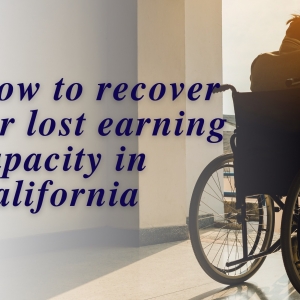Street takeovers, also known as sideshows, have become a growing concern in many urban areas. They involve reckless driving, illegal stunts, and the blocking of public streets for the purpose of entertainment. In this article, we will delve into the street takeover phenomenon, exploring whether it is simply a lifestyle choice or a negative influence on our communities.
Street takeovers have gained popularity among certain groups who see them as a thrilling and rebellious lifestyle. Participants engage in activities such as drifting, burnouts, and dangerous maneuvers, often attracting a crowd of onlookers. For these individuals, street takeovers represent an adrenaline-fueled escape from the mundane and a form of self-expression. However, it is crucial to recognize the significant risks and negative consequences associated with this behavior.
One of the major concerns surrounding street takeovers is the blatant disregard for public safety. These events often occur without proper permits or safety measures, putting participants and bystanders at serious risk of injury or even death. The reckless driving maneuvers performed during street takeovers pose a threat not only to the drivers themselves but also to innocent pedestrians and other motorists who may be caught in the chaos.
Furthermore, street takeovers can have a detrimental impact on the community as a whole. The illegal blocking of public streets disrupts the normal flow of traffic, inconveniences residents, and creates a hostile environment. Businesses may suffer as potential customers are deterred from accessing the affected areas, and emergency services may be delayed in reaching those in need. Additionally, the noise pollution and property damage associated with street takeovers can erode the quality of life for local residents.
While some argue that street takeovers are simply a form of self-expression and a reflection of urban culture, it is essential to acknowledge the negative influences they perpetuate. These events glorify illegal and dangerous behavior, sending the wrong message to impressionable individuals, particularly young people. The normalization of such activities can lead to a disregard for law and order, contributing to a decline in overall community safety and well-being.
Addressing the street takeover phenomenon requires a multi-faceted approach. Law enforcement agencies must actively enforce traffic regulations and crack down on illegal street takeovers to deter participants. Additionally, education and outreach programs can help raise awareness about the dangers and negative impacts of these events, promoting safer alternatives for individuals seeking excitement and self-expression.
In conclusion, the street takeover phenomenon poses significant challenges to public safety and community well-being. While it may be viewed by some as a lifestyle choice or a form of urban culture, the negative influences and risks associated with street takeovers cannot be ignored. Combating this issue requires a collective effort to enforce regulations, educate the public, and provide alternative outlets for individuals seeking thrills and self-expression. Only by doing so can we ensure the safety, harmony, and vitality of our communities.
Street takeovers have gained popularity among certain groups who see them as a thrilling and rebellious lifestyle. Participants engage in activities such as drifting, burnouts, and dangerous maneuvers, often attracting a crowd of onlookers. For these individuals, street takeovers represent an adrenaline-fueled escape from the mundane and a form of self-expression. However, it is crucial to recognize the significant risks and negative consequences associated with this behavior.
One of the major concerns surrounding street takeovers is the blatant disregard for public safety. These events often occur without proper permits or safety measures, putting participants and bystanders at serious risk of injury or even death. The reckless driving maneuvers performed during street takeovers pose a threat not only to the drivers themselves but also to innocent pedestrians and other motorists who may be caught in the chaos.
Furthermore, street takeovers can have a detrimental impact on the community as a whole. The illegal blocking of public streets disrupts the normal flow of traffic, inconveniences residents, and creates a hostile environment. Businesses may suffer as potential customers are deterred from accessing the affected areas, and emergency services may be delayed in reaching those in need. Additionally, the noise pollution and property damage associated with street takeovers can erode the quality of life for local residents.
While some argue that street takeovers are simply a form of self-expression and a reflection of urban culture, it is essential to acknowledge the negative influences they perpetuate. These events glorify illegal and dangerous behavior, sending the wrong message to impressionable individuals, particularly young people. The normalization of such activities can lead to a disregard for law and order, contributing to a decline in overall community safety and well-being.
Addressing the street takeover phenomenon requires a multi-faceted approach. Law enforcement agencies must actively enforce traffic regulations and crack down on illegal street takeovers to deter participants. Additionally, education and outreach programs can help raise awareness about the dangers and negative impacts of these events, promoting safer alternatives for individuals seeking excitement and self-expression.
In conclusion, the street takeover phenomenon poses significant challenges to public safety and community well-being. While it may be viewed by some as a lifestyle choice or a form of urban culture, the negative influences and risks associated with street takeovers cannot be ignored. Combating this issue requires a collective effort to enforce regulations, educate the public, and provide alternative outlets for individuals seeking thrills and self-expression. Only by doing so can we ensure the safety, harmony, and vitality of our communities.




